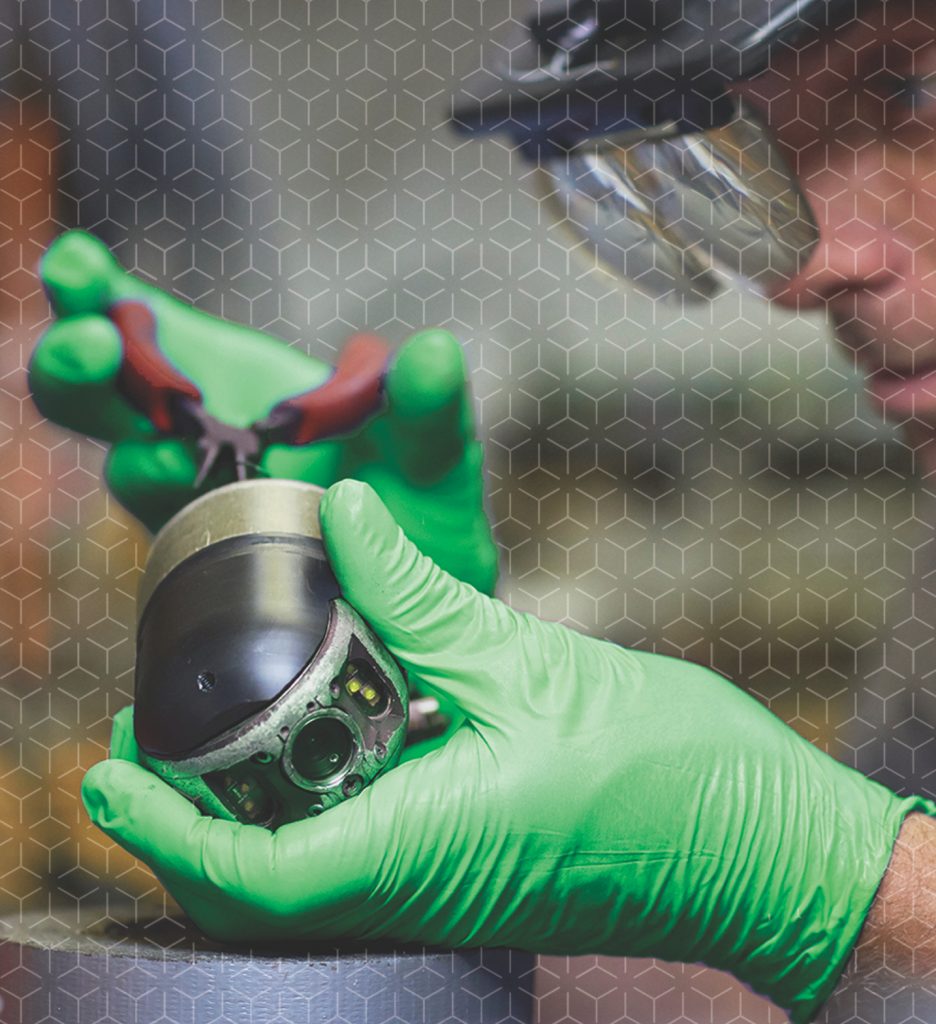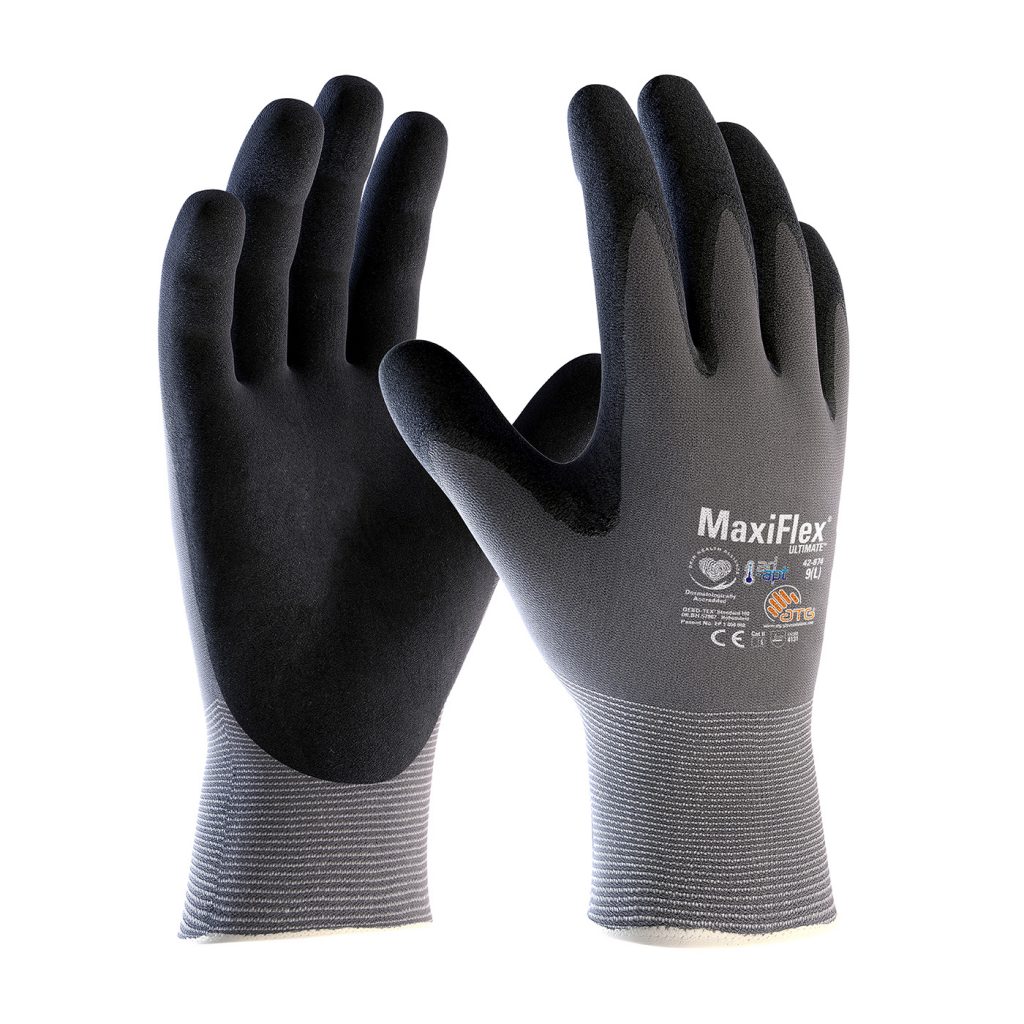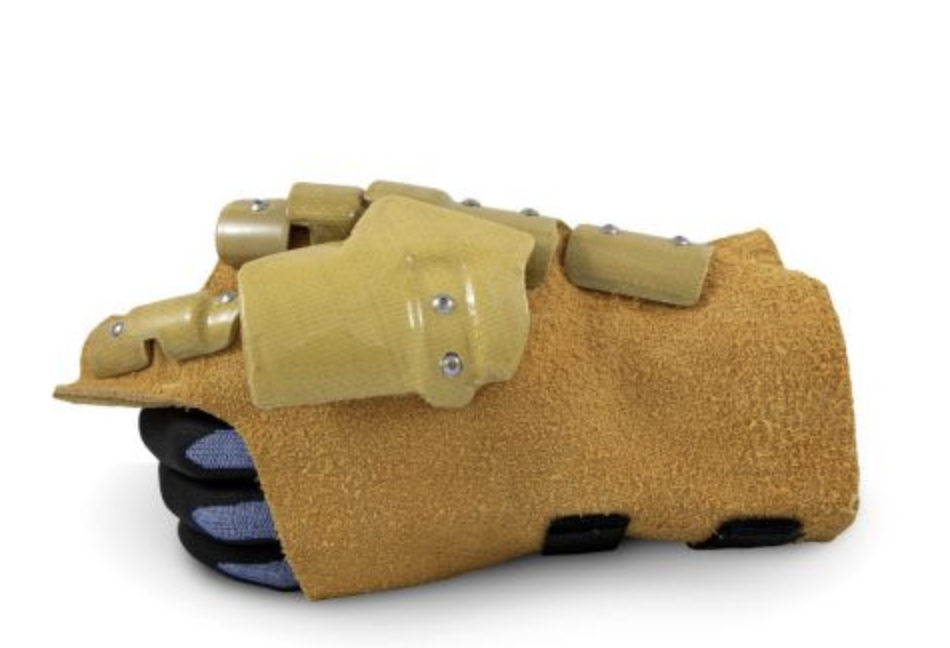
Pandemic shakes up gloves market
December 10, 2020
By
Marcel Vander Wier
Hand protection was not immune to COVID-19, with shifts in buyer habits and spikes in demand for single-use options

SHOWA’s 6110PF glove is a fully biodegradable product built with Eco Best Technology — the world’s first disposable nitrile glove, according to national sales manager Terry Smith. (Photo courtesy of SHOWA Group)
The swing towards single-use gloves has led to a global shortage and price increases, according to Brad Machado, regional sales manager for PIP Canada in Burlington, Ont.
The changes came quickly after the COVID-19 lockdowns went into effect in March, he said.
“Essentially, like what we saw with toilet paper and bottled water on the shelves… the same thing was happening out in the industrial world.”
And the high demand continues today, said Machado.
“If you’re looking to buy disposable gloves and position yourself for 2021, good luck,” he said.
“You want to start positioning yourself for 2022, just because I think for 2021, we’re still going to be going through supply issues.”
Sales in single-use and reusable nitrile gloves have positioned Quebec’s SHOWA Group for a “great year,” said national sales manager Terry Smith, even as general-purpose and cut-resistant brands have taken a hit, due to multiple manufacturing shutdowns across Canada.
Single-use products are hard to come by during the COVID-19 pandemic, he said. “Nobody has them on the shelves.”

PIP Canada’s ATG MaxiFlex glove features an essential oil to help keep workers’ hands cool. (Photo courtesy of PIP Canada)
Factors in purchasing
Price and comfort remain major determinants for those purchasing gloves for their workforce, according to
manufacturers.
“Will people wear the glove? The most expensive, advanced gloves are useless unless people wear them,” said Joe Geng, vice-president of Superior Glove in Acton, Ont. For that reason, worker input on comfort is important when deciding to purchase PPE.
“It’s a very personal decision,” he said. “Find gloves workers actually want to wear — they’re out there.”
Going forward, Geng expects protective gloves to offer increased comfort levels alongside higher levels of protection, be specifically designed for individualized tasks, and trend towards increased ergonomics — taking cues from sports gloves.
Superior Glove’s TenActiv 21-gauge cut-resistant gloves with foam nitrile palms are an example of highly protective PPE that is touch-screen compatible and conducive to maximum dexterity — as close as one can get to a barehanded feel, he said.
Meanwhile, with more than 2,000 glove styles serving many industries, comfort is No. 1 for SHOWA clients, said Smith.
“If your glove doesn’t fit right or feel right, the person wearing it would be more likely to remove the glove and hence risk hand injury,” he said.
Even for cut-resistant gloves, “everyone’s looking for the best cut protection, but with the most dexterity they can still have.”
Price point continues to be the other main factor in purchasing, according to Machado.
But the cheapest option isn’t necessarily best. Savings can occur over time with a better quality product — even a low-cost reusable glove, he said, noting reusable options give users better cost-per-wear, and also saves single-use PPE for essential workers that truly need it through the duration of the pandemic.
“When crises like this happen, I think people get a little more educated and have a better respect for PPE and safety,” said Machado, noting he expects the market to shift towards a product in-between a reusable and disposable glove.
“The whole fear is — what happens if five years from now another crisis hits, and the same thing with disposables happens? What’s the next option out there?”
Synthetic, reusable knits
At PIP Canada, the trend is towards synthetic knit gloves, as clients want to ensure their hand protection works with them — not against, said Machado.
Comfort and breathability — even through coatings — is the claim to fame for his company’s ATG product line, he said.
“Our ATG line of hand protection is like our Ferrari, Rolls Royce when it comes to gloves,” said Machado. “It is a premium, but it will outlast a lot of products out on the market.”
The synthetic knits are not cut or sewn, but rather formed seamlessly on a knitting machine. Options vary from no coating to various amounts of dips to provide splash protection and grip, he said.
All ATG products have a skin-friendly manufacturing process, and are washed three times before shipping.
A popular PIP Canada product is the MaxiFlex Ultimate AD-APT, a seamless knit nylon elastane glove, said Machado.
“What’s very unique about that glove is ATG has figured out a way to infuse an essential oil right into the yarn,” he said.
Sweat activates the oil, allowing hot air to escape the glove, keeping the user’s hand 30 per cent cooler, explained Machado.
“The goal is to keep the glove on the worker’s hand. As soon as they take off a glove, that’s when they are exposed to a mechanical hazard.”

Superior Glove’s Shield was built to protect nail-gun operators from common construction injuries. (Photo courtesy of Superior Glove)
Specialized designs
At Superior Glove, a five-year project with hopes of protecting construction workers against nail-gun injuries culminated in the Shield — a nail-gun hand pad with plating in areas most susceptible to injury.
Released in 2019, the PPE is meant to be worn over existing work gloves, rather than as a standalone product, said Geng.
With armour plating built from Kevlar, the design is the result of working directly with workers through prototypes, he said.
Superior Glove also has products protecting fingertips from being crushed — meant for industries such as mining, construction and oil and gas. The PinchGuard protection system forms around the fingertips and is a first in the North American market, according to Geng.
The Endura line of products is made from goatskin, durable in very tough conditions.
Superior Glove recently received national attention for its innovative production strategies and product development.
Towards the future
For Smith, the future of gloves is biodegradable.
“We’ve developed and invented the world’s first disposable nitrile glove, and we’ve expanded our offering on those products — now we have four single-use biodegradable nitrile disposable gloves,” he said.
“Everybody’s looking for green initiatives and to cut their carbon footprint. Any regular nitrile glove will be in a landfill site for 100 years. These biodegradable gloves will break down between two and five years.”
SHOWA’s 6110PF glove is a fully biodegradable nitrile disposable glove with Eco Best Technology, said Smith.
Through this product line, SHOWA is doing its part to protect the environment for future generations, he said.
“You look at grocery stores — they’re banning plastic bags,” said Smith. “It’s all less waste to landfill.”
“Every company has their green initiatives — it could be ISO 9001 or 14001. Everyone has been challenged to cut back on waste.”